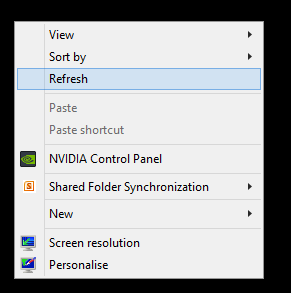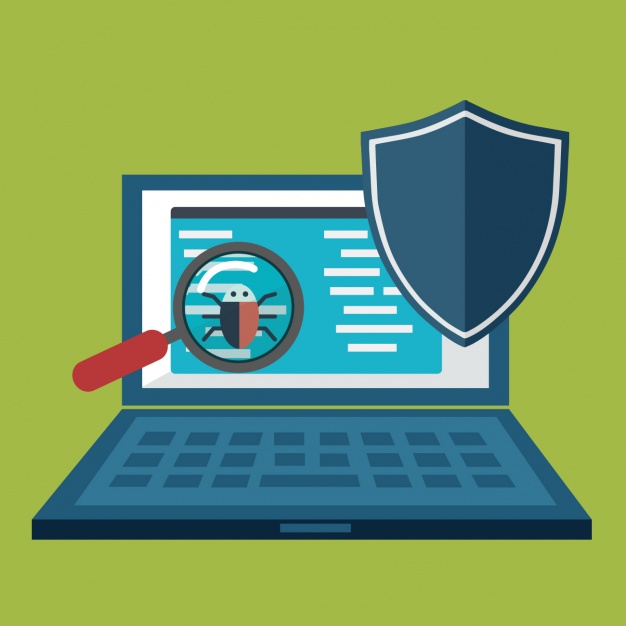Microsoft Windows 10 has a ghost folder that appears out of nowhere and then refuses to go back or deleted. This is the Removable Storage Devices folder on Desktop, which has the appearance of a system file folder. Most of the users are scared of tampering with it lest it would affect the functioning of the operating system. But one important fact that is not considered that all the important files required by the Windows 10 operating system already exists in the Windows folder. It is important to note that anything that is created afresh and especially on Desktop might not be of much relevance.
The Removable Storage Devices folder on Desktop was first reported in 2018. Microsoft has not provided an official statement on why this folder is created and what it is used for. The issue is still persistent, and even after countless Windows 10 updates that have been downloaded and installed on our computer, the problem hasn’t been resolved. This folder is generally empty and sometimes contains available devices and drives in your system, similar to My Computer icon.As the name suggests, it appears only after a user connects an external drive to the computer like a Flask disk, Pen Drive, or external Hard drive via USB.
Also Read: Best PC Cleanup Software
Different Methods On How To Delete The Removable Storage Devices Folder On Desktop In Windows 10?
Method 1. A Simple Refresh Can Fix Many Things

The Removable Storage Devices folder on Desktop is a temporary folder and can be removed by a simple fresh in most cases. All you have to do is to right-click on a space on your Desktop, and from the contextual menu, click on Refresh. Alternatively, you can press the F5 button on your keyboard while you are on the desktop wallpaper to refresh your Desktop. The Removable Storage Devices folder on Desktop will vanish where it came from.
However, as per the tech forums, there have been reports that this disappearance is temporarily, and the folder reappears after some time, and in other cases, it never vanished but remained on the Desktop. In such cases, you can try the next solution, which is a bit technical and more efficient.
Also Read: Overhaul Your Windows 10 Desktop With These Tricks!
Method 2.deployment Image Servicing And Management (Dism) Command
The DISM is an in-built utility tool present in Microsoft Windows 10 to scan and resolve specific issues with appropriate command lines. Follow these steps to resolve the Removable Storage Devices folder on Desktop:
Step 1. Type CMD in the search bar located on the taskbar.
Step 2. The search results locate Command Prompt App and click on Run as an administrator to launch the app in elevated mode.
Step 3. In the back and white window, type the following command, and hit the Enter key on the keyboard.
DISM /Online /Cleanup-Image /RestoreHealth
Step 4. This process initiated in Step 3 will take some time to complete and resolve general issues with system files on your computer.

Step 5. Restart your computer and check if the Removable Storage Devices folder on Desktop has been removed.
Also Read: Folders You Should Never Touch On Windows 10
Method 3: Run Antivirus, Antimalware, Or System Optimizer Tool

One of the reasons for unwanted files and folders being created or unintended activity in your system is due to a virus or malware. And this calls for a regular scan by an updated Antivirus or Antimalware to identify and eliminate potential threats to your system. You can use Windows Defender or any other Third-Party Antimalware to scan and delete the Removable Storage Devices folder on Desktop lest it was created by malicious software.
However, this is a temporary fix, and to keep your computer free of errors, threats, unwanted folders, and any other hassles you can think of, I recommend using a powerful System Optimizer Tool. This PC optimizer will not only act as an Antimalware but also clean junk files and boost your computer’s performance. I have been using Advanced System Optimizer for a couple of years now, and I can state that I do not require any other tool in my system to enjoy a hassle-free computing experience.
Also Read: 5 Simple Ways to Organize your Messy Windows Desktop
Bonus: How Beneficial Can Advanced System Optimizer Be To Your Computer?
Advanced System Optimizer is one of the most robust clean-up tools for Windows 10 that not only removes viruses and malware but also optimizes the system to run efficiently and enhances performances. Some of the features include:
Disk Cleaner & Optimizer: Removes junk, temporary and obsolete files.
Security and Privacy: Detects and removes malicious software and deletes browsing history, cookie, and cache.
Optimization software: Frees up RAM, optimizes game performance.
Driver Updater: Downloads and installs the latest drivers from various sources to keep your system updated.
Backup and Recovery: Facilitates backup and restore of the system and personal files on your system
Also Read: How to Move Default Data Folder to a Different Drive: Windows 10
Your Thoughts On How To Delete The Removable Storage Devices Folder On Desktop In Windows 10?
There are three methods to get rid of unwanted files and folder like the Removable Storage Devices Folder on Desktop. Although that folder might not consume much space of your hard drive as a necessary file in front of your eyes every time you use the computer, it can certainly be avoided. The optimization software is the easiest and most effective way to get rid of these issues and keep your system error-free.
For any queries or suggestions, please let us know in the comments section below. We would love to get back to you with a solution. We regularly post on tips and tricks, along with answers to common issues related to technology.
Suggested Reading:
How To Change A Desktop Background On A Windows Computer
How To Securely Hide Files And Folders In Windows 10 With Command Prompt
How to Password Protect a Folder in Windows 10 Without Using Third-Party Tools



 Subscribe Now & Never Miss The Latest Tech Updates!
Subscribe Now & Never Miss The Latest Tech Updates!
Mujtaba
Thank you for your information guys! You definitely saved me from a heart attack which was going to happen for me due to that file! Keep the good work up!Dheeraj Manghnani
Hi Mujtaba, glad to know that your issue was resolved.Dave Lagramada
this is the most useful and helpful thing i have ever searchedKrishan Vijay
Thank you for appreciation.